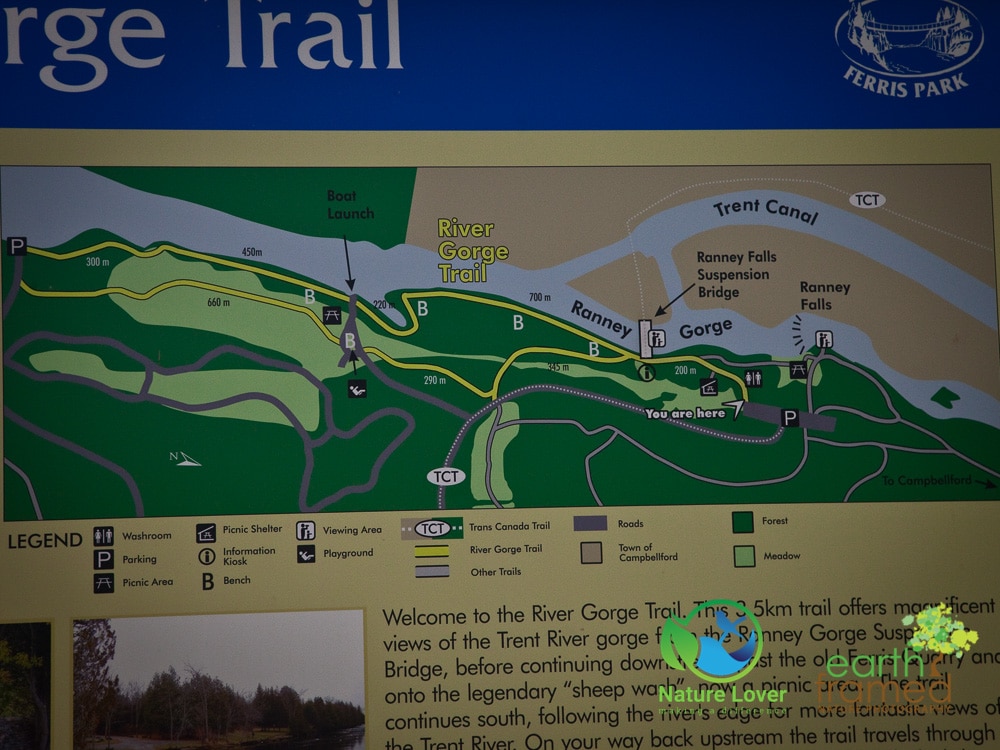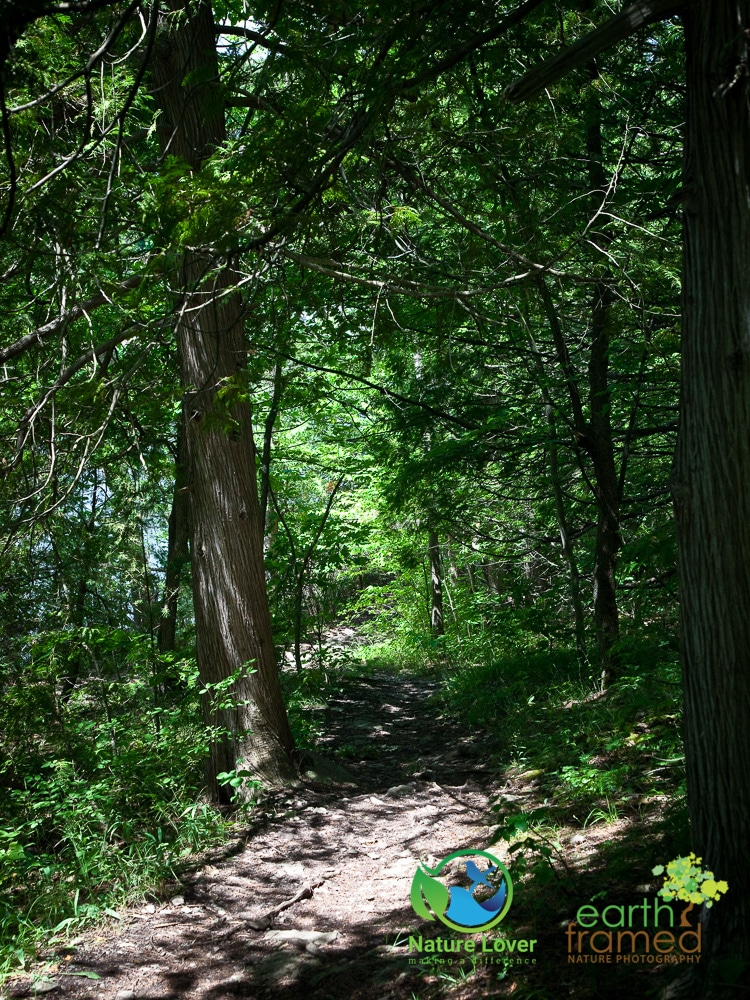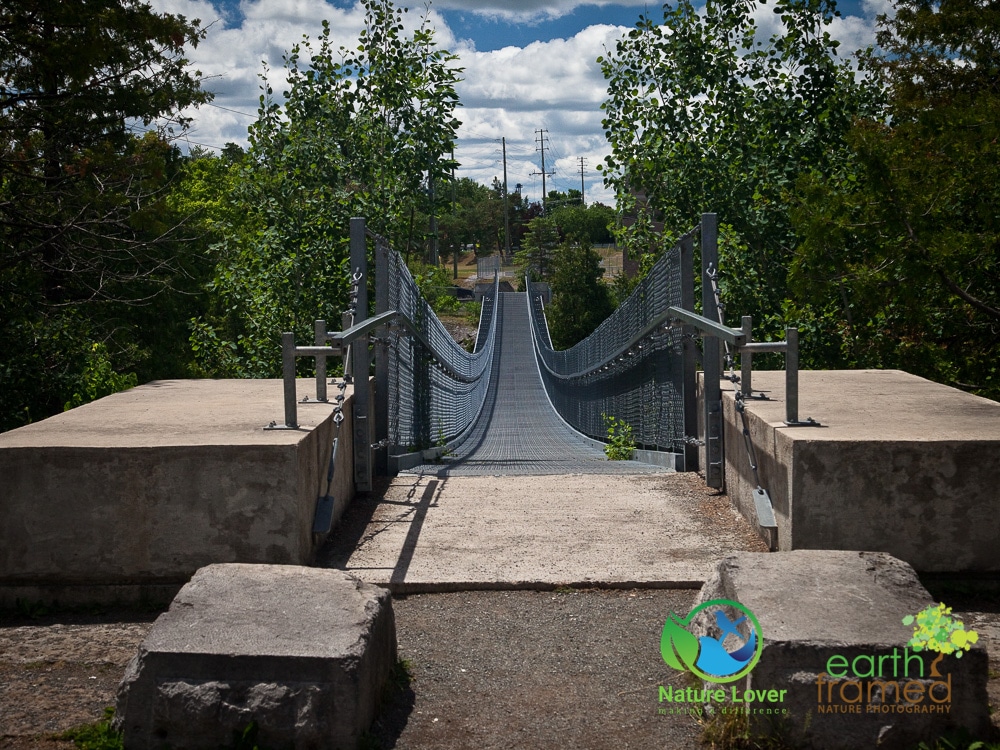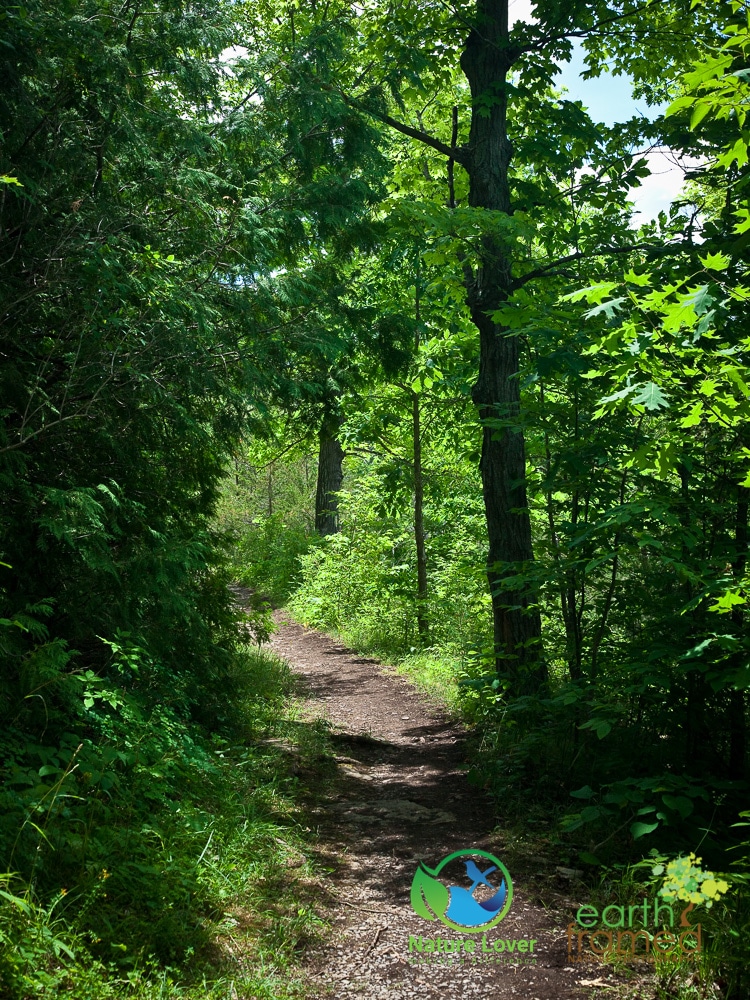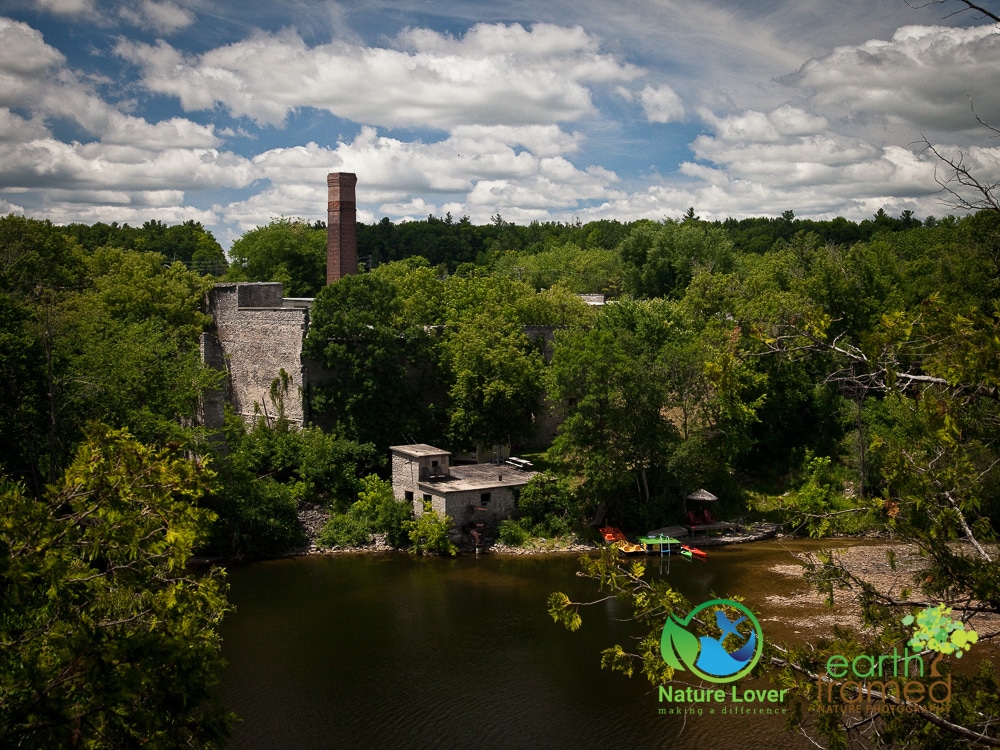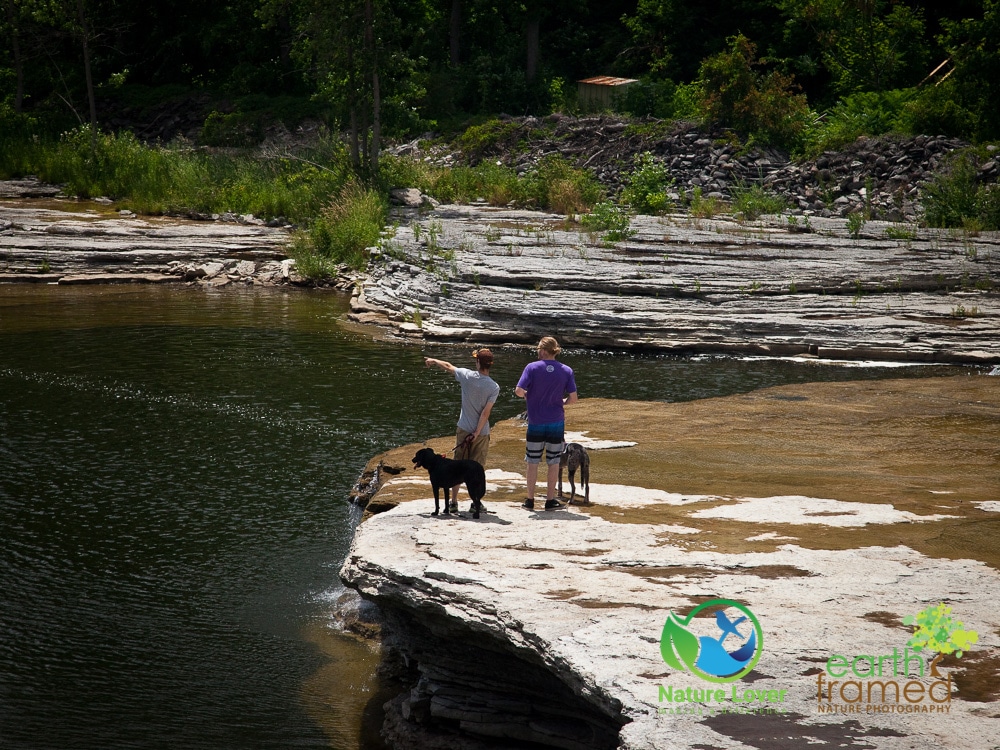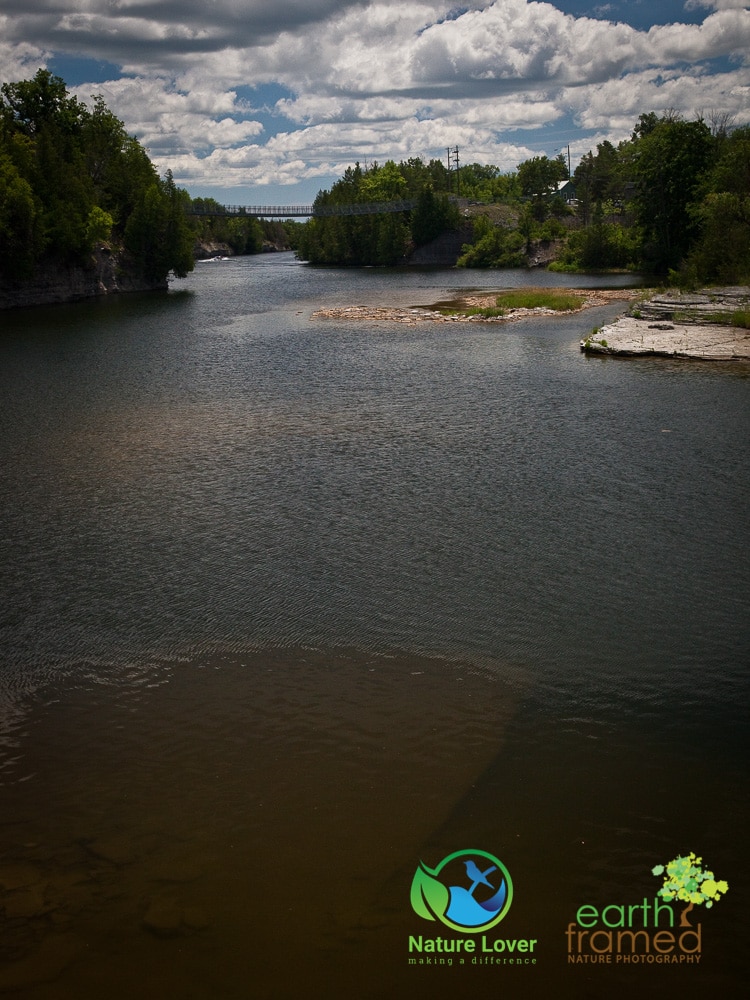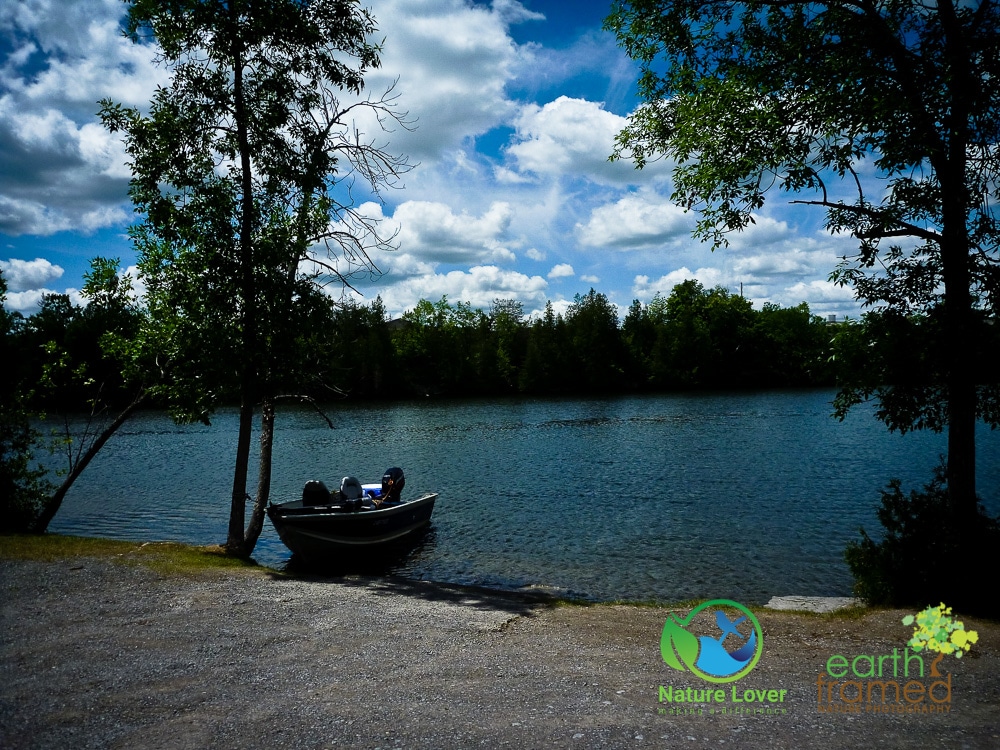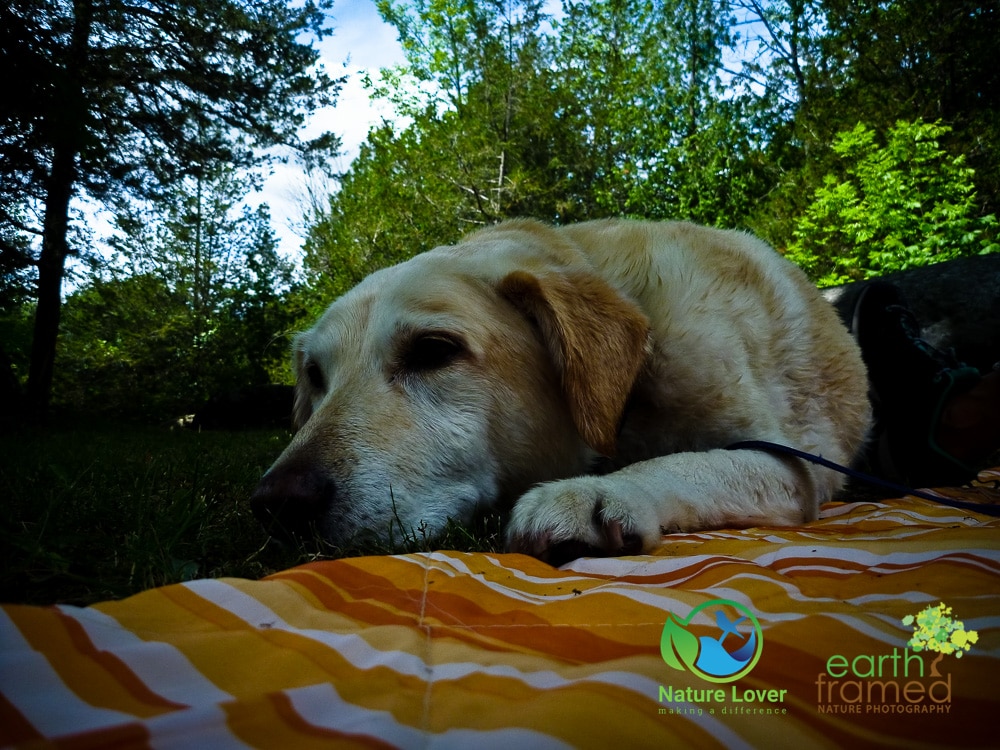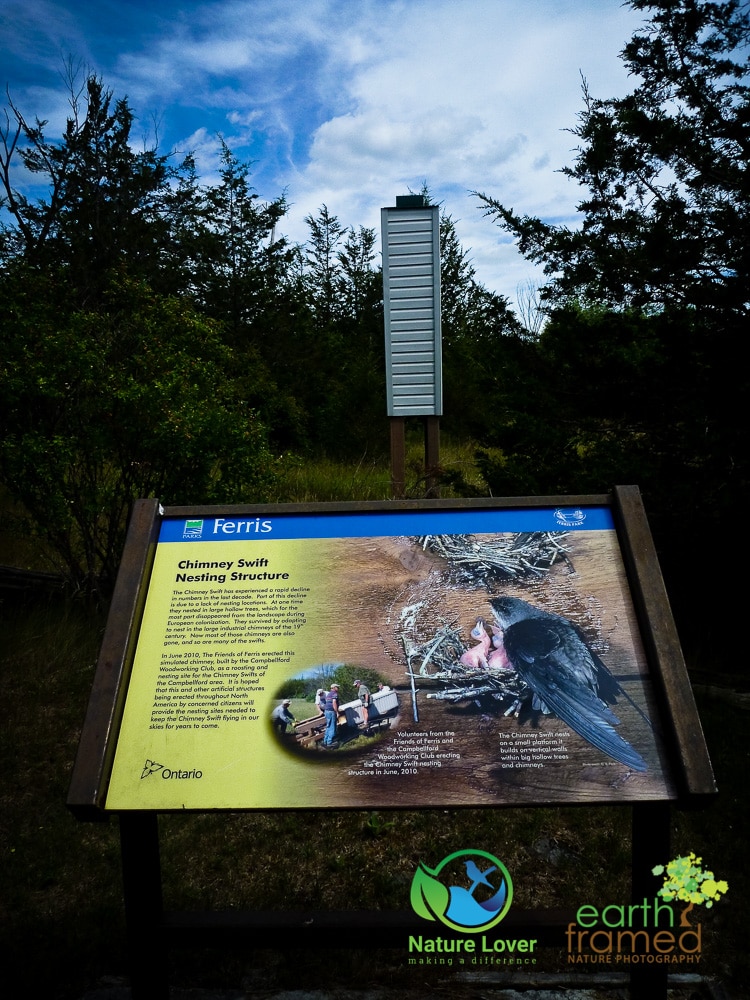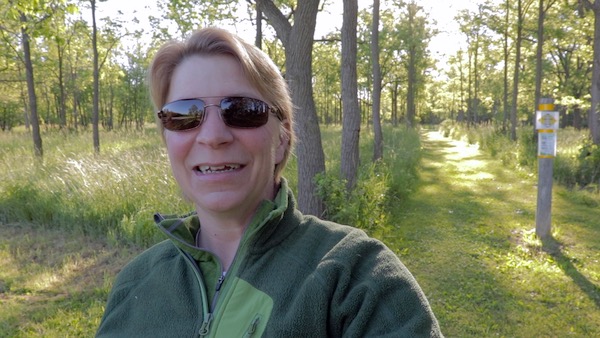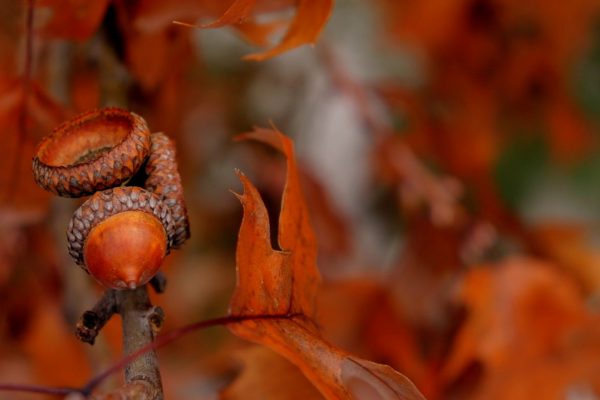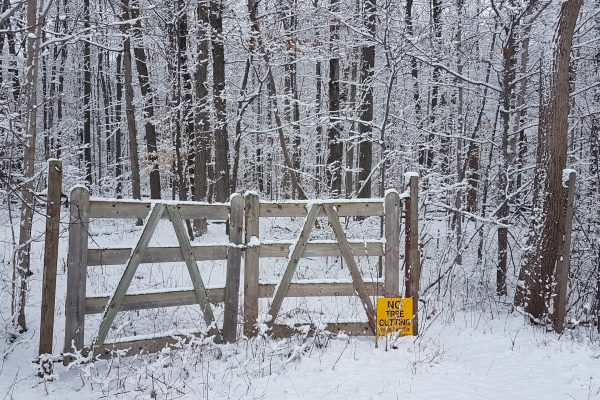While camping for two weeks at Presquile Provincial Park near Brighton, we took a day trip 35 minutes north to Campbellford to scout out Ferris Provincial Park. It was a beautifully sunny day that would have felt a lot warmer if we didn’t have a cool breeze coming off the Trent River.
There were three separate trails that we could have hiked at Ferris Provincial Park; Drumlin Trail System, River Gorge Trail and Ranney Falls Trail. We decided to hike the Ranney Falls Trail which was only 1 kilometre long but it would give us the opportunity to walk along the river, see the suspension bridge and the falls. Instead of going directly to the trail marked in red, we started from the southeast part of the parking lot to see the susupension bridge and do part of the River Gorge Trail.
Ranney Falls Trail
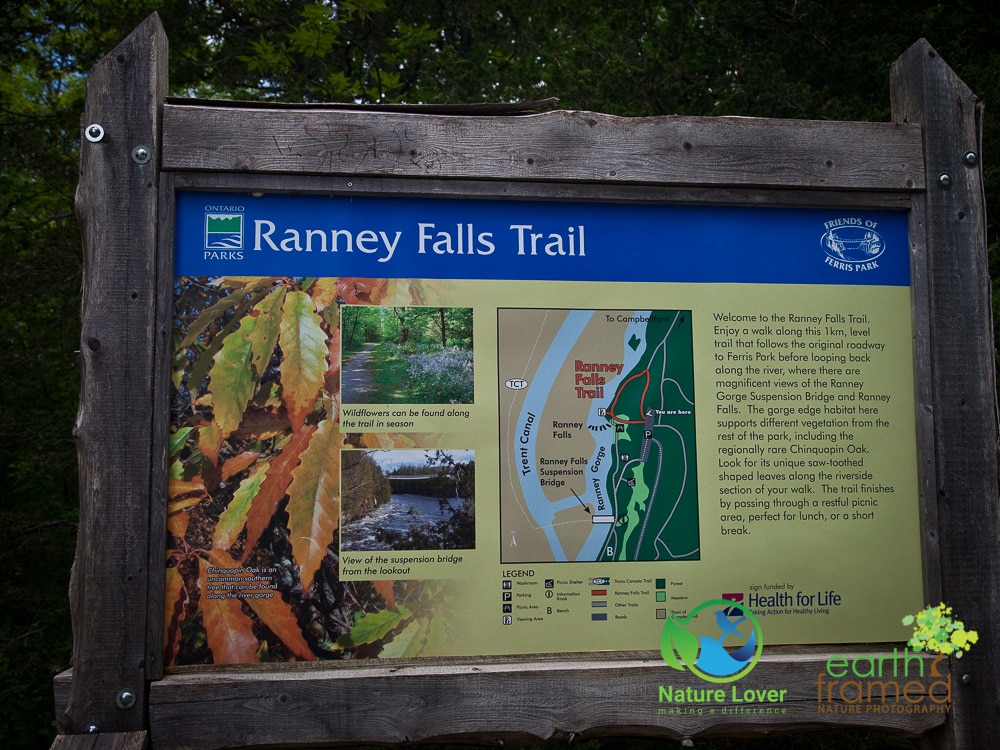 At the beginning of the trail there were decent toilets available and, of course, the trail sign. We like to take a picture of each trail sign, not only for these posts, but to guide us when we reach intersections that might not be clearly marked. I just bring up the sign image in my camera’s viewer, enlarge the area and then we make the correct turn on the trail.
At the beginning of the trail there were decent toilets available and, of course, the trail sign. We like to take a picture of each trail sign, not only for these posts, but to guide us when we reach intersections that might not be clearly marked. I just bring up the sign image in my camera’s viewer, enlarge the area and then we make the correct turn on the trail.
The trail along the river was rougher than the main parts of the trail. There were many roots, rocks and some steep areas. A variety of trees could be seen along the way and many were labeled with information on them. It was very informative, especially considering we were just starting to learn to identify different tree species. 
This White Cedar appeared, at first glance, to have several woodpecker holes in it but when we took a closer look we saw the holes were once tree limbs. The woodpeckers did take advantage of this natural occurrence and they dug out the areas after the fact.
Also known as “The Tree of Life” for its medicinal qualities, it is one of the 4 sacred plants of the native medicine wheel. It can be distinguished from Red Cedar by its flat, not round leaves.
The suspension bridge was 300 feet long and 30 feet above the river. It is also part of the Trans Canada Trail. We did not walk across the bridge because Maya will not walk on metal grating. The metal would have been too hot anyway and the bridge leads to town, not to a park trail.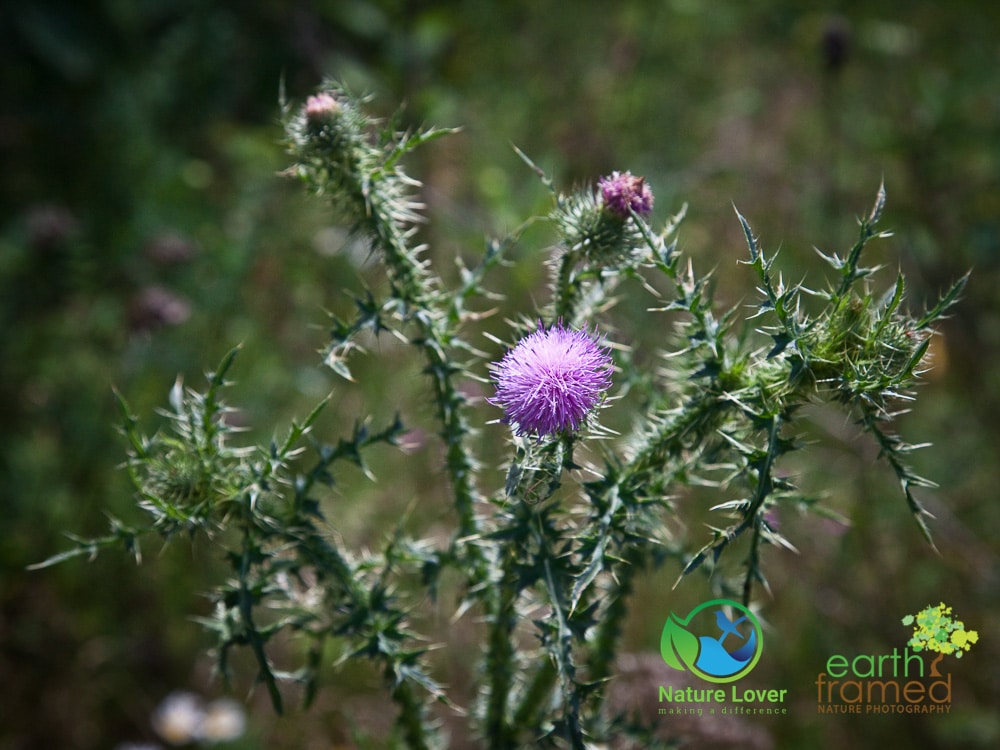
The non-native Bull Thistle, also known as the national flower of Scotland, is actually edible. The stems of the plant can be peeled and steamed (or boiled). The tap roots of young thistles can also be eaten raw or cooked. 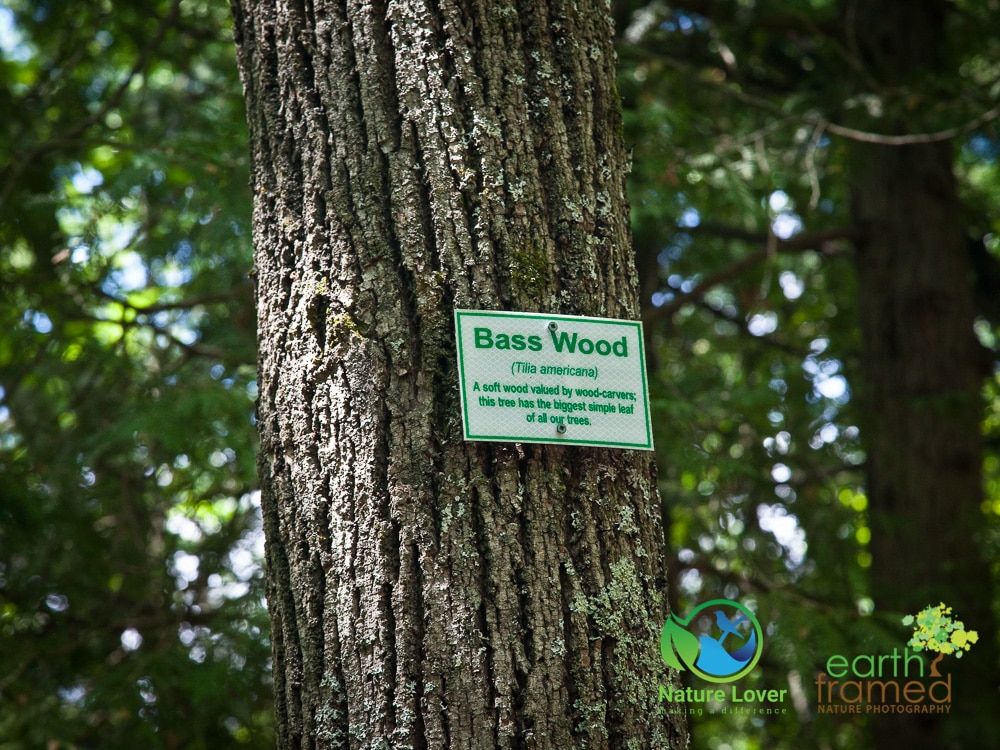
Another tree that was labeled during our walk was the Bass Wood. Also known as a linden or lime tree, this tree has heart-shaped leaves that creates thick foliage making it an excellent shade tree.
A soft wood valued by wood-carvers; this tree has the biggest simple left of all our trees.
The beautifully delicate Deptford Pink wildflower is a non-native plant that grows along roadsides and in fields. This wildflower was named after Deptford, England where it use to be extremely common. The flower is also known as Grass Pink.
The trail was much flatter along the actual Ranney Falls Trail section. The trees supplied amble shade while there was a pleasant breeze coming up the gorge.
The water was trickling down the shelf waterfall and many hikers had made their way down to the edge. There is a dam upstream and it is extremely important to be aware that the gates can be opened and cause a gush of water to come unexpectedly down the waterway. Signs are posted to warm visitors of the danger.
Even from the trail we had an incredible view of the gorge, river and suspension bridge. We could see the result of years of water erosion along the gorge’s limestone edges.
After the hike we took a drive around the park to check out their camping facilities and individual sites. The campground wasn’t very large and it was extremely empty considering it was the middle of the summer. Many of the sites would not be suitable for trailers and hopefully that information is provided on the website when people are booking their sites.
The area would be great for those with boats or if you want to explore the area and use the park as a base.
Swimming And Lunch At The Boat Launch
We came across the boat launch area, almost always a good place to let a dog go for a dip and cool down. There was a bit of a ledge that Maya had to get down but it was shallow enough at the shore for her to bring her toy back to, yet deep enough that she didn’t need to go far before she was actually swimming. Off to the right side of the above picture’s view was a lovely little inlet that would be a nice spot for swimming or lazying around on a inner tube. The river was very quiet with only a few boats on it and there was plenty of shade in various areas on shore to enjoy the breeze, the views and a nice picnic lunch. Another group of people had hung hammocks in the cedar trees and were enjoying them while others cooked over the open pit barbeques.
After a refreshing dip in the river and a few picnic treats, Maya settled in for an afternoon nap. While we were enjoying the afternoon ourselves we heard a loud knocking sound nearby and were overjoyed to spot a huge Pileated Woodpecker whacking away at a large tree!
Along the road we came across this colourful sign and strange sided post. The post is a “Chimney Swift nesting structure” that the park is hoping will help the threatened species which is in decline due to loss of habitat.
The park seemed to be well taken care of and had a lot to offer, considering its size. We were very surprised to find probably over 75% of the sites empty, which is very uncommon in Southern Ontario in the middle of the summer.
Sources:
“Cirsium”. Survival and Self Sufficiency. Retrieved 21 December 2016.
“Ferris.” Welcome to Ferris Provincial Park. N.p., n.d. Web. 21 Dec. 2016.
Keeler, Harriet L. (1900). Our Native Trees and How to Identify Them. New York: Charles Scriber’s Sons.
“Welcome to Ferris Provincial Park :: Campbellford Ontario.” Welcome to Ferris Provincial Park :: Campbellford Ontario. N.p., n.d. Web. 21 Dec. 2016.



